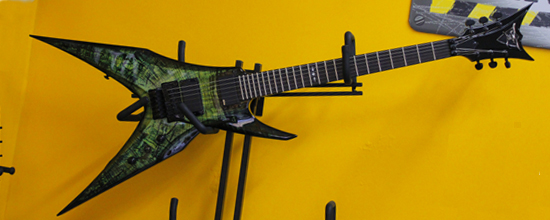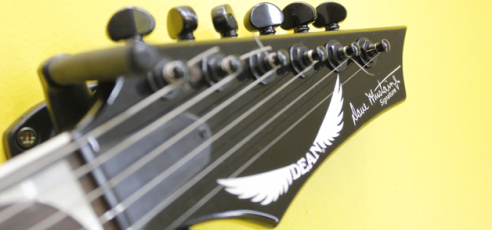A minor scale is one of the countless variations of the major scale, offering different textures and sounds. Playing songs based on a major scale, or simply playing the major scale has a certain happy sound to it. Although this does a good job in a certain context, it generally doesn’t provide the right sound required in hard rock and metal. That’s were the minor scale plays a role. Minor scales sound have this sadder sound to them, a factor that aids in making them sound harsh enough for heavier styles of music whether in playing chords, or soloing.
Minor scales are relatively easy to construct. By simply taking a major scale and lowering 3rd, the 6th, and the 7th note by a half-step, the minor scale is formed. E major will be taken as an example to demonstrate the idea. The notes of the E major scale are:
E F# G# A B C# D#
The then by lowering the 3rd, 6th, and 7th notes a half-step, the E minor would contain the following notes:
E F# G A B C D
The only notes that are in common are the root note, the 2nd, the 4th, and the 5th. Major and minor scales that share the same root note are called “parallel major and minor”. The intervals between the tonic and the rest of the notes of the major scale are the following:
F#: Major second G#: Major third
A: Perfect fourth B: Perfect fifth
C#: Major sixth D#: Major seventh
Logically, their names would differ from the ones in the E minor scale:
F#: Major second G: Minor third
A: Perfect fourth B: Perfect fifth
C: Minor sixth D: Minor seventh
The word “perfect” is used to indicate that the note is the same in both the major scale and the minor scale. Still, a question would come to mind: “If the second note is the same in both major and minor scales, how is that that it’s labeled as a “Major” second?” The reason behind that is that it’s nothing more than a convention that music theorists have agreed upon.
A major is somewhat of an interesting example to take. The notes it contains are:
A B C# D E F# G#
So by converting it to it’s parallel minor the notes would then become:
A B C D E F G
which are the exact same notes as the C major scale. One might think: “How is it that the both C major and A minor share the exact same notes?” The answer to that is left for the next article.









